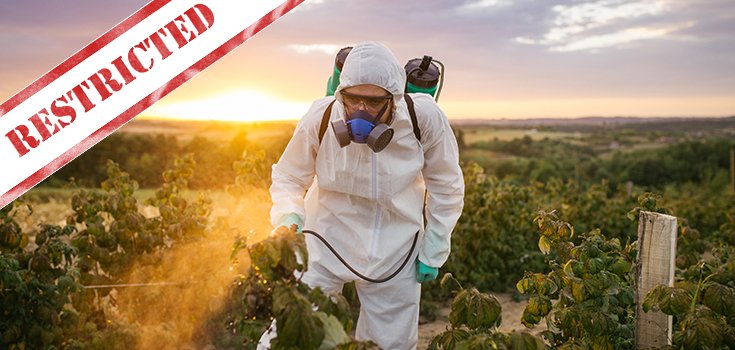Hawaii Bans Pesticide Linked to Developmental Delays in Children

Hawaii just became the first U.S. state to ban chlorpyrifos, a chemical the Nazis used during World War II, and currently a pesticide that is dangerous to pregnant women and children.
Studies have linked the chemical, made by Dow Chemical, and others in its class to brain damage, respiratory issues, reduced IQ, attention deficit disorder (ADD), convulsions, and even death in those exposed to significant amounts of it. Farm workers and children are most likely to come into contact with chlorpyrifos. [1]
Should Chlorpyrifos be Outright Banned?
One would think the U.S. government would ban chlorpyrifos, too, but that’s not the case. Earlier this year, U.S. Environmental Protection Agency (EPA) chief Scott Pruitt said earlier this year that the agency would not ban the toxic chemical. Instead, Pruitt and the current presidential administration as a whole are putting in many hours trying to cover up the health ramifications associated with chlorpyrifos.
In fact, in 2017, the EPA released the findings of a 5-year study that raised the safety threshold for chlorpyrifos exposure and found that some children were already exposed to more than that amount. Following President Trump’s appointment of Pruitt, the EPA denied a petition filed by environmental groups to ban the pesticide, saying more time was needed to analyze the research. [2]
The chemical was banned for residential use in 2011.
But Hawaii has decided to put its residents first, and recently prohibited the use of chlorpyrifos (which goes by the brand names Lorsban and Dursban) on fruits, vegetables, and other crops grown in the state. [1]
On June 20, 2018, Hawaii Gov. David Ige signed a pesticide bill banning all chlorpyrifos-containing pesticides starting in 2019. [2]
Hawaii Takes a Stand of its Own
The bill further prohibits spraying pesticides within 100 feet of schools while they’re in session. Additionally, it requires companies to disclose what pesticides they use and where.
The bill goes into effect January 1, 2019. However, there is a 3-year extension that will allow companies to apply for a permit to use chlorpyrifos.
State Sen. Russell Ruderman, who introduced the bill, said:
“We all agree to keep guns and predators out of our schools, yet somehow protecting kids from poisonous chemicals has been an uphill battle. But today we celebrate a rare victory for the environment and for the people.”
Corn is the crop most commonly sprayed with chlorpyrifos, but the pesticide is also applied to broccoli, soybeans, peaches, strawberries, apples, citrus, walnuts, Brussels sprouts, cauliflower, and cranberries. It is also sometimes applied to golf courses and in wood treatments.
Chlorpyrifos is a Neurotoxin
The U.S. Centers for Disease Control and Prevention (CDC) categorizes chlorpyrifos as a neurotoxin. In a study of 40 children published in 2012, prenatal exposure to chlorpyrifos was associated with structural brain changes in children at ages 5 to 11.
Another study of 265 children by the same researchers found that prenatal exposure to chlorpyrifos was linked to lower IQ and working memory problems in children starting at age 7.
Thank you, Hawaii, for taking this important step in protecting children, workers, and the environment!
Sources:
[1] One Green Planet
[2] Buzzfeed
